There's so many stories from the Viking Age, but how many are true? Browse these Viking facts to learn something new about some of Scandinavian history's most famous people.
Modern TV shows have shot the popularity of the Viking Age off the charts. From famous characters to historic battles, there's a lot of stories that persist in popular culture.
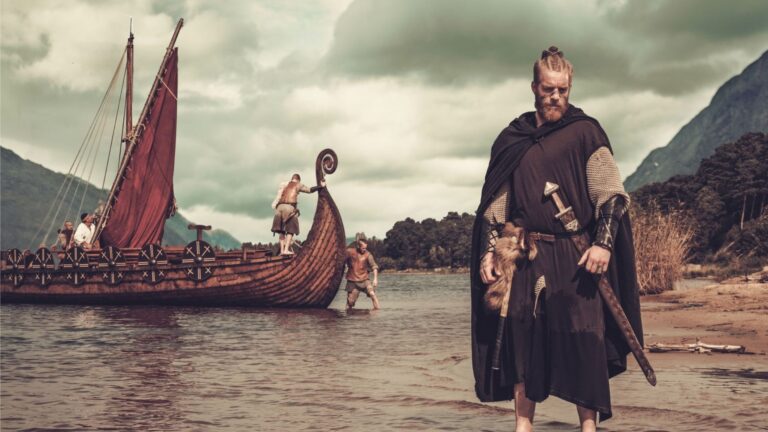
But how much do you really know about the timeline of the Viking Age? There's so many myths and legends surrounding the time that it's hard to know what's true, and what's not.
We've done our best to leaf through the history books and speak to archaeologists and other history experts worldwide. The result? A list of fun viking facts, or at least, as close to facts as we can get!
Ready? Then get comfortable, because here are some fascinating tidbits with which to impress your friends and family.
1. The Icelandic Sagas are an important source of Viking facts
The Icelandic Sagas, central to our understanding of Viking history, offer detailed narratives about the lives, adventures, and conflicts of the Norse people.
However, their historical accuracy is debated, as these sagas were penned centuries after the events they describe, often blending fact with folklore. This blend enriches the sagas but complicates their use as pure historical records.
Despite this, they remain invaluable for providing insight into Viking society, culture, and the values they held dear, acting as a bridge to the distant Viking Age.
2. We know a lot through the accounts of enemies
During the Viking Age, the Norse language was very much a spoken one. Viking runes were used, but this wasn't an everyday written language. As such, the Vikings wrote down almost nothing about their own adventures.
What does this mean? Well, aside from the sagas, much of our knowledge from the time is made up of accounts written down by people in lands that were conquered. This presents its own accuracy issues, of course.
One great example is the accounts of the attack on Lindisfarne written in the Anglo-Saxon Chronicle: “the woeful inroads of heathen men destroyed God’s church in Lindisfarne island by fierce robbery and slaughter.”
Writing several years later, the chronicler Symeon of Durham wrote: “They miserably ravaged and pillaged everything. They trod the holy things under their polluted feet, they dug down the altars, and plundered all the treasures of the church.”
3. Viking runestones still exist today
Vikings were skilled storytellers. Although stories were mostly passed down orally, they used runestones as a medium to tell tales of their deeds, honour the deceased, or mark territory.
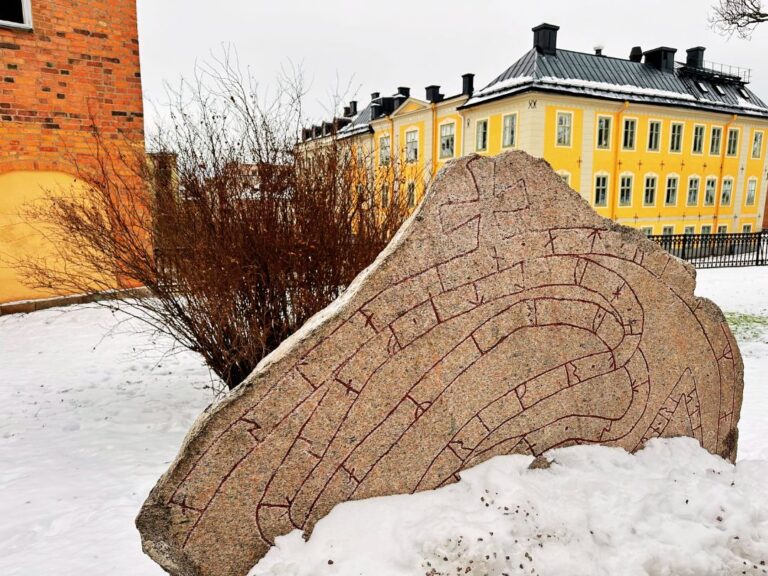
These stones, found throughout Scandinavia, are adorned with runes and sometimes intricate carvings that offer a glimpse into the Viking worldview. Many of the best are found in Uppsala, Sweden.
4. Viking helmets did not have horns
This myth persisted for many years, but these days I think that most people already know that warrior helmets from the time did not have horns. In fact, some historians believe that painters invented the horned helmet as recently as the 19th century!
It is possible ceremonial or burial helmets had horns, although there is scant evidence for this. What we do know is that everyday helmets worn in battle most definitely did not.
5. Helmets may not have been commonplace
So few complete helmets have ever been found that some experts have speculated that Viking warriors may never have worn them in battles.
It's likely that some head protection was worn. Perhaps they wore leather headwear, which is much less likely to survive to be found by archaeologists.
6. Viking Age people were clean, not dirty
The thought of men aboard a boat for weeks on end might conjure up images of filth, but archaeological finds suggest otherwise. Tweezers, razors and combs are among the items to have been found in archaeological digs.
7. The word ‘Viking' is a verb
The term ‘Viking' has its roots in the Old Norse language, where it initially functioned as a verb rather than a noun.
Historically, ‘viking' referred specifically to the act of raiding and embarking on expeditions, indicating a dynamic process of exploration, plunder, and adventure.
This linguistic nuance points to the Vikings' own perception of their activities, emphasising the action and the enterprise of raiding foreign lands over the identity of the raiders themselves.
Over the centuries, the usage of the term evolved, transitioning from describing a particular activity to denoting the Norsemen known for engaging in such raids.
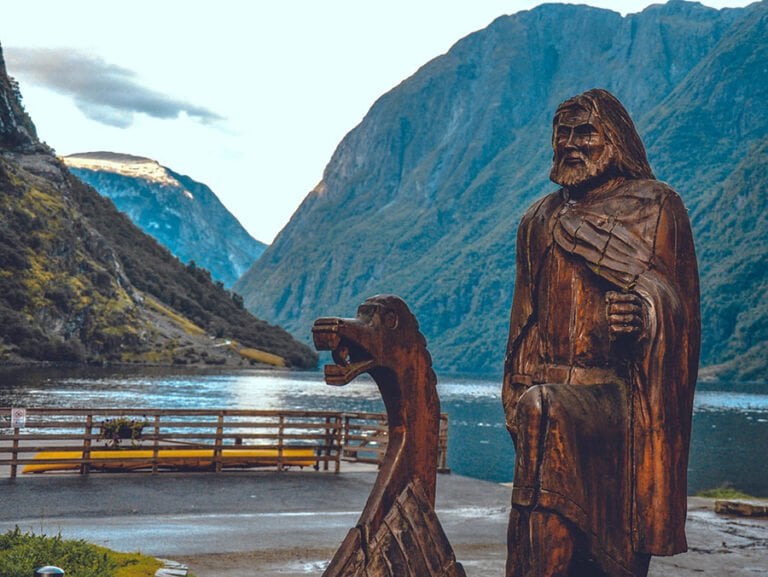
This shift reflects a broader change in how the Vikings were viewed, both by themselves and by others, from their actions to their cultural and ethnic identity.
8. Vikings gave us the word ‘berserk’
The Norse language used during the Viking Age heavily influenced the English we use today. One great example is the word ‘berserk'.
Warriors that entered battle in a trance-like state were known as berserkers. Some say they wore the skins of bears or wolves. It's worth thinking about next time you use the word!
9. Most Viking Age people were not warriors
Contrary to the warrior image popularised by media, most Vikings led peaceful lives, engaging in farming, crafts, and trade rather than raiding.
The majority were farmers in small communities, focusing on agriculture to sustain their society. Artisans also played a key role, creating goods for local use and trade.
Norse traders expanded their reach across Europe and beyond, exchanging a variety of goods, showcasing a complex network of trade routes. This paints a picture of Viking Age people as versatile settlers and traders, not just warriors.
10. The majority of men were farmers
Disappointing as it may be to fans of the stories, but everyday Viking lifestyle was actually pretty boring. Most Viking men never, or rarely, picked up a sword.
Most would have lived in peace and worked as farmers, growing barley, rye and oats and keeping cattle, goats, pigs and sheep.
11. The Vikings travelled to North America
The Icelandic-Norwegian explorer Leif Erikson beat Christopher Columbus, the person most often credited with discovering the ‘new world', by about 500 years.
The expedition led to the establishment of a Norse settlement at L'Anse aux Meadows in Newfoundland, marking the first known European presence in North America.
This site, now a UNESCO World Heritage Site, provides archaeological evidence of the Viking's short-lived outpost, showcasing their advanced seafaring skills and the extent of their explorations beyond their Scandinavian homelands.
12. They used honey as a sweetener
Honey held a unique place in Viking cuisine as their sole natural sweetener. This substance was not only cherished for its ability to sweeten food, adding a desirable sweetness to an otherwise savoury diet, but it also played a central role in the production of mead.
Mead, a sweet alcoholic drink made through the fermentation of water and honey, was highly prized among the Vikings for its taste and the social status it conferred during feasts and gatherings.
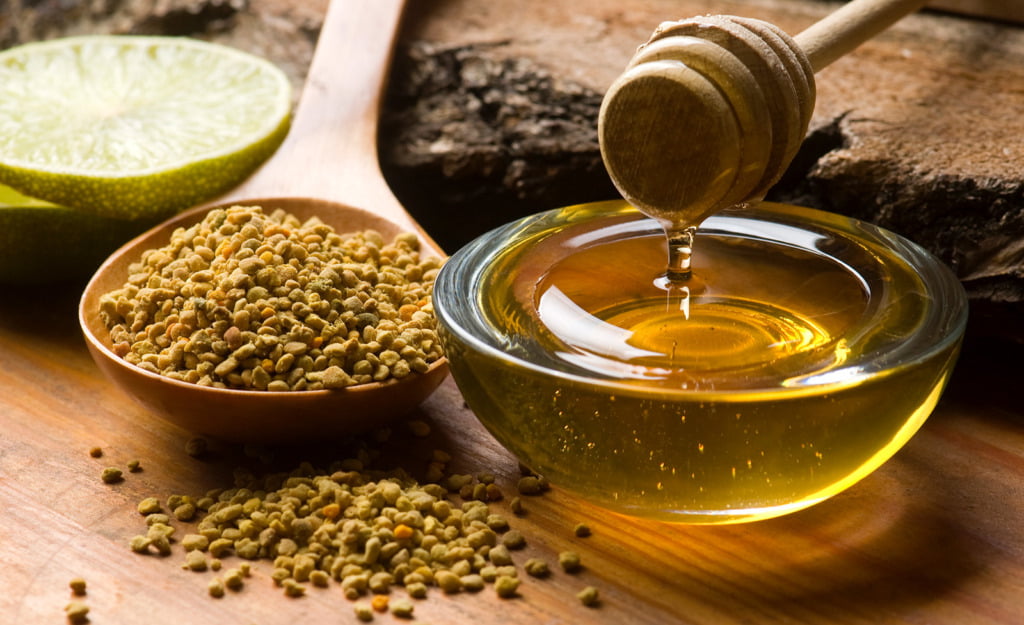
This beverage, often associated with Norse gods and legends, is still enjoyed today, serving as a link to the culinary traditions of the past.
The use of honey showcases the Vikings' ingenuity in utilising available natural resources to enhance their food and drink, further highlighting its importance in their daily life and cultural practices.
13. Viking Age people were keen skiers
Viking Age people were not only adept sailors but also skilled skiers, a fact supported by archaeological findings that trace the existence of rudimentary skis back at least 6,000 years.
By the era of the Vikings, skiing had evolved significantly, serving a dual purpose in their society.
It was a practical mode of transportation, enabling them to navigate the snow-covered landscapes of Scandinavia efficiently during the long winter months. Skis facilitated travel, hunting, and communication across vast distances.
It also became a popular recreational activity, where individuals and groups would ski for enjoyment. These activities likely helped to strengthen communal bonds and offered a much-needed respite during the cold, dark winter months.
14. There was a god of skiing
The Viking's veneration of Ullr, the skiing god, underscores the central role of skiing in their culture.
Ullr, shrouded in mystery due to limited medieval records, is prominently associated with skiing, archery, hunting, and defense in Norse mythology.
Typically depicted on skis with a bow, he represents skills crucial for survival and defense in Viking society, such as navigating snowy terrains and hunting.
Ullr is celebrated as the ski-god, bow-god, hunting-god, and shield-god, reflecting his significance across various aspects of Viking life.
His worship highlights the Vikings' respect for the natural world and their reliance on it for sustenance and protection, emphasizing Ullr's role in their spiritual and everyday lives.
15. There was no ‘Viking community'
Contrary to the notion of a cohesive ‘Viking community,' the Vikings were divided into numerous independent tribes across Scandinavia, each led by its own chieftain.
These tribes valued their autonomy, often resulting in conflicts over cooperation. While alliances did form, they were usually temporary, driven by necessity rather than a sense of unity.
Despite their fragmented society, Vikings were not completely isolated from each other. Trade was crucial, enabling tribes to access goods and resources they lacked, fostering connections through shared language, religious beliefs, and customs.
This facilitated a level of interaction and exchange, albeit without a unified identity. The Viking era is characterised by this complex network of independent tribes, emphasizing local leadership's role in navigating a competitive landscape.
The idea of a single Viking community most likely comes from the perspective of people living elsewhere.
16. Games were popular in the Viking Age
Norse people engaged in various games, including strategic board games, physical sports, and competitions of strength and skill to entertain and train.
‘Hnefatafl', an ancient Norse board game, epitomises strategic warfare, once rivalling chess in popularity.
Played on a grid, the game simulates a defending king striving to escape attackers. Its rules emphasize strategy, symbolizing Viking tactical prowess. Hnefatafl's legacy endures, reflecting the intellectual culture and societal values of the Vikings.
‘Knattleik' is said to have been played with sticks and a ball. While no detailed account of the rules exist, it's a reasonable assumption that the game bared some similarity to field hockey, or perhaps hurling.
17. They travelled as far east as Turkey
Vikings were known as great travellers. In fact, Norsemen made up a lot of the Byzantine Empire's Varangian Guard in modern-day Turkey.
It is believed that Harald Hardrada rose through the ranks to become the commander of the Guard in Constantinople. He would eventually return to become the King of Norway, and is often referred to as the ‘last great viking'.

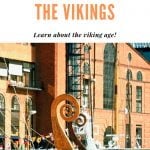

Further to the last point, there is Norse rune “graffiti” etched into a stone slab in the famous Agia Sofia mosque (then Christian cathedral) in Istanbul. It’s theorized that this was done by one of the viking guards.
wow, that’s interesting!
Yes, the graffiti (runes) translates to something like…”[xxx] was here.” Seriously, that is a fact.
There were women raiders, known as shield maidens
A favorite ski run here on Jay Peak in northern Vermont, is called “Ullr’s Dream.” I never knew why. Now I do. But I have also read somewhere recently that Ullr was a goddess, a female deity. I will hunt down my source.
Ullr was the son of of the grain goddess Sif, and the stepson of Thor.
You might be thinking about Skaði.
https://en.wikipedia.org/wiki/Ska%C3%B0i
Wow !! That’s Interesting Thank You So Much You Helped Me Alot In My School Project And I Got A + Thanks!!🥺🥺🎉🎉🎉🎉🎉🙏🙏🙏🙏🙏🙏🙏🙏
Horns and wings on helmets originated with the costumiers of Wagners operas and then became Victorian mythology.
Thanks, this was very helpful in my school project